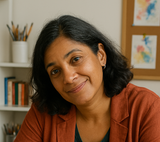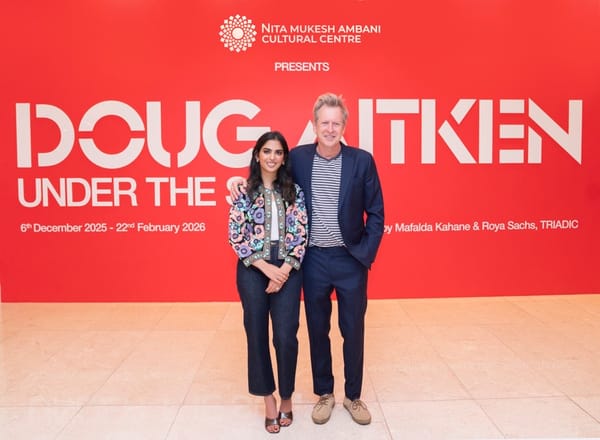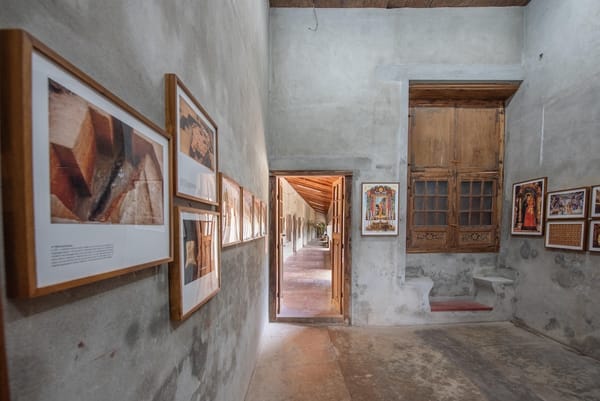Teaching Beyond Technique: Nurturing the Artist’s Mindset
True art education extends far beyond technical skill. It’s about cultivating curiosity, reflection, and emotional intelligence: nurturing the artist’s mindset that transforms craft into expression and learners into lifelong explorers of the creative process.

In most art classrooms, the hum of activity is familiar — charcoal dust rising, brushes swishing, clay turning under the pressure of eager hands. Students learn how to mix colours, render perspective, or master the anatomy of a figure. Technique is celebrated as the foundation of art-making. Yet, as any artist eventually discovers, technical proficiency alone does not guarantee artistic depth. To create work that resonates, students must cultivate not only skill but also mindset — a way of seeing, questioning, and responding to the world that transcends instruction manuals and measured lines.
The Limits of Technical Mastery
Technique, for all its necessity, can become a double-edged sword. The young painter who executes perfect realism might still produce lifeless canvases. The sculptor with impeccable form might struggle to express emotion. The musician who plays flawlessly may fail to move an audience. Skill without vision risks becoming craft without purpose.
The art educator’s challenge, then, lies in teaching students to move beyond replication. Once the fundamentals are mastered — the grammar of line, texture, and tone — the real education begins. Students must learn to question what they make, why they make it, and how their work connects to something larger than themselves.
As painter Agnes Martin once said, “The function of art work is... the renewal of memories of moments of perfection.” Technical mastery allows access to those moments; mindset transforms them into meaning.
Cultivating Curiosity and Critical Reflection
An artist’s mindset begins with curiosity — a restless urge to observe, explore, and make connections. Great artists, from Leonardo da Vinci to Anselm Kiefer, have always been voracious learners, unafraid to wander across disciplines. Leonardo’s sketchbooks are filled not only with anatomical drawings but also studies of flight, water flow, and the movement of light. His art was inseparable from inquiry.
In the classroom, curiosity must be nurtured deliberately. This means shifting from instruction to investigation — posing questions rather than providing answers. What happens if you break the rules of perspective? How might emotion alter composition? What does a material “say” about the work itself? Encouraging experimentation gives students permission to fail productively — to see failure not as an endpoint but as a stage in discovery.
Equally vital is reflection. The artist’s mindset is inherently introspective. Keeping journals, engaging in peer critiques, or revisiting earlier works helps students recognise how their ideas evolve. Reflection transforms process into growth. It allows artists to develop a sense of authorship — to locate themselves within their own work.
The Role of Emotional Intelligence
Art is, above all, emotional labour. Every brushstroke carries intention, vulnerability, or resistance. Yet emotional awareness is rarely discussed in formal art education. Many young artists struggle to navigate self-doubt, frustration, or the inevitable comparison to others. Without emotional resilience, the creative process can feel punishing.
Teaching emotional intelligence — empathy, self-awareness, patience — is therefore as essential as teaching composition. An educator might begin by modelling openness: discussing their own creative struggles, normalising uncertainty, and framing setbacks as opportunities. Group discussions about emotional responses to art — both their own and others’ — can also help students articulate what they feel and why.
The goal is to enable students to engage deeply with their work, rather than merely execute it. When artists understand their emotional patterns, they begin to recognise the underlying motivations that drive their art. From this understanding emerges authenticity — that elusive quality distinguishing memorable art from the merely competent.
Encouraging Independent Thinking
One of the quiet dangers of art education is conformity. Students eager to please teachers or emulate famous artists may unconsciously suppress their own instincts. The result is a homogeneity of style, where works look polished but indistinguishable. To counter this, educators must encourage independence — a willingness to diverge, to interpret rather than imitate.
This involves creating space for open-ended projects, where outcomes are not predetermined. Instead of prescribing a theme, teachers can ask students to respond to a concept — “time,” “memory,” “resistance” — and allow interpretation to lead. The aim is not to guide every choice but to help students articulate theirs. Why this subject? Why this form? Why now?
When students learn to justify their artistic decisions, they begin to develop a voice — and, crucially, the confidence to stand by it. Technique becomes a means of expression, not the measure of worth.
Connecting Art to the World
Artists do not create in isolation. Their work is shaped by culture, politics, history, and the environment. Yet art education often overlooks these contexts, treating art as a self-contained discipline. To nurture the artist’s mindset, students must learn to situate their practice within the world they inhabit.
Integrating art history, literature, philosophy, or even current affairs into studio discussions can open unexpected pathways. How did Käthe Kollwitz respond to war? What might climate change mean for landscape painting today? What does digital media do to our sense of authorship? These questions push students to think critically about art’s role beyond the studio — as a form of dialogue with society.
Moreover, engaging with communities — through collaborative projects, exhibitions, or public art — helps students understand the social dimension of creativity. They begin to see art not only as self-expression but as communication, connection, and contribution.
Mentorship and the Educator’s Role
Ultimately, teaching beyond technique is about mentorship, not mere instruction. The best art teachers recognise that they are not producing artisans but cultivating individuals. Their role is less to shape and more to uncover — to help students locate the artist already within.
This requires attentiveness and humility. A good mentor listens as much as they direct, guiding each student according to their temperament and pace. They know when to intervene and when to step back, allowing the student’s intuition to lead. As the painter Paul Klee observed, “Art does not reproduce the visible; rather, it makes visible.” The same is true of teaching — it reveals, rather than imposes.
Many renowned artists recall a single teacher who saw something in them before they saw it themselves. That moment of recognition can be transformative. It signals to the student that their perspective matters, that their creative instincts are valid. In this sense, the educator’s faith often precedes the artist’s own.
Embracing Uncertainty
To nurture the artist’s mindset is to accept uncertainty — both in process and outcome. Creative growth is rarely linear. Students will produce failures, encounter blocks, and question their abilities. Yet it is within this uncertainty that true artistic development occurs. The educator’s task is to help students see ambiguity not as paralysis but as possibility.
Art-making thrives on paradox: control and chaos, form and freedom, knowing and unknowing. By embracing this tension, students learn that mastery does not mean certainty — it means comfort with exploration. The most important lessons are those that cannot be easily measured: how to trust one’s instincts, how to sustain curiosity, how to keep working even when inspiration wanes.
The Artist as Lifelong Learner
Perhaps the most crucial mindset to instil is that of continual learning. The art world changes constantly — new media, shifting aesthetics, evolving debates. A true artist never stops being a student. As British sculptor Barbara Hepworth wrote, “I rarely draw what I see; I draw what I feel in my body about what I am looking at.” That kind of sensitivity is cultivated over a lifetime of looking, feeling, and re-evaluating.
Art education, therefore, should not aim to produce finished artists but self-sustaining learners — individuals who possess the curiosity, resilience, and imagination to keep evolving long after formal study ends. When technique fades into muscle memory, mindset endures as the compass guiding their creative journey.





